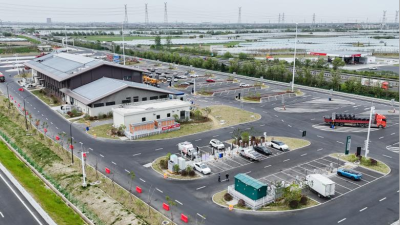Highlighting Evolving Network Security Challenges: What Lies Ahead for Pakistan?
The network security is a crucial component of information technology which is putting safeguards in place to preserve the integrity, accessibility and confidentiality of data and computer networks. The significance of network security in the ever-changing digital ecosystem cannot be neglected as there is a greater potential risk of network security breaches with our growing reliance on digital platforms for communication, business, and data storage.
The landscape of network security threats is continuously evolving as a result of changes in digital environment and technological advancements. Moreover, the digital footprints of both the companies and individuals have expanded significantly resulting in potential attack surface. In current landscape, everything can be a potential target and anything can be turned into a potential weapon. The threats are getting smarter with capability of automated action and are getting harder to identify in order to mitigate them. Moreover, this has been compounded by reality that conventional security technologies frequently operate in isolation which makes it more challenging to identify and stop sophisticated attacks. In Pakistan, the digital landscape is evolving rapidly which leads to an increase in network security threats.
The emerging threat landscape evolves constantly with the appearance of new cyber threats. The primary causes of dynamic threat landscape include higher dependence on information technology products and services along with more advanced tools and attack techniques. The shifting threat landscape of the network security is a complicated and a multidimensional problem which calls for constant monitoring, adjustment and creativity in order to effectively mitigate risks and safeguard digital assets.
The network security is vastly impacted by Artificial Intelligence (AI) and Machine Learning (ML) as they provide the security of digital environments by offering real-time insights into network traffic and device behavior. In Pakistan, AI and ML are being used in NADRA, PTA, financial institutions and e-commerce companies for verifications and real-time monitoring. Both technologies are capable of sorting through the high volume of data produced by security technologies, spotting anomalies, and evaluating data from new connected assets. Moreover, AI and ML are able to discriminate between safe and unsafe connections, files, users as well as devices. The technology facilitates troubleshooting, faster issue resolution and offers remedy advice. It can anticipate issues before they occur, react to issues in real time, and enhance security insights by improving threat response and mitigation of threats. The AI/ML techniques are used to decrease unknowns and enhance certainty surrounding decision makers. They direct more trusted automated procedures which can save network operating costs and give users the best possible connected experience. Moreover, AI/ML are revolutionizing network security by offering intelligent, automated protections against ever-more sophisticated threats. The more widespread and intricate networks are, the more important their role becomes.
In network security, regulatory compliance is the observance of laws, rules, and industry standards pertaining to an entity's activities. Pakistan has taken several initiatives to secure its cyberspace. The Pakistan Telecommunication Authority (PTA) has announced the Critical Telecom Data and Infrastructure Security Regulations (CTDISR) 2020 that needs to be complied with by all PTA Licenses. Moreover, the Prevention of Electronic Crimes Act 2016 (PECA) was enacted to curb the rising cybercrimes in Pakistan. The process of achieving compliance is continuous and calls for frequent reporting and monitoring.
On the other hand, social engineering is a form of cyberattack that takes use of social interaction-based human vulnerabilities to breach cyberspace security. It seeks to win over trust of targets and cause them to let down their guard and engage in risky behavior, such disclosing personal information or clicking on dangerous links. Phishing attack is the most used technique of social engineering in Pakistan. An entire organization may be impacted by an attack that starts with a single victim who is successfully tricked.
As per a renowned network security expert and senior member IEEE, Mr. FNU Ziauddin, “the social engineering and regulatory compliance are two essential components of network security. The prevention of human-centric dangers requires an understand and mitigating social engineering attacks is crucial while complying with industry standards and regulations aids firms in aligning their operations with them.” This insight shows that in order to guarantee the availability, confidentiality, and integrity of network resources, both the social engineering and regulatory compliance require constant work and attention.
Thus, it is important recognize that there are many different facets and intricate dynamics pertaining to emerging threats in network security. The emerging threat landscape is ever-evolving with new attack techniques and vulnerabilities appearing on a regular basis. The real-time insights and intelligent defenses are provided by AI and ML which are vital tools in the identification and mitigation of these threats. The compliance with regulations guarantee adherence to laws and industry norms, and preventing human-centric dangers requires an awareness of social engineering attacks.
To conclude, the wisdom in Mr. Ziauddin's suggestions cannot be over looked. He stated that: “As we look toward the future, it is imperative that Pakistan commits to enhancing its public-private partnerships and deepens its investment in cybersecurity. This commitment will not only bring about heightened awareness among the public but will also significantly mitigate the risk of cyberattacks. The development of a unified national cybersecurity framework, coupled with targeted support for the youth, is essential in fostering a resilient national cybersecurity pool”.
Moreover, Pakistan should also learn from the expertise of China. China's network security system is highly sophisticated and multifaceted, aiming to safeguard its cyber infrastructure from internal and external threats. It encompasses a wide range of measures including the implementation of the Cybersecurity Law, which mandates critical information infrastructure operators to enhance their security measures and undergo regular audits and inspections.
In a nutshell, I would say that Pakistan’s vision for a secure digital landscape is not only achievable but essential for the nation's progress and prosperity in the digital age. Let us move forward with hope and determination to make this vision a reality, ensuring that Pakistan stands as a beacon of cybersecurity strength and resilience on the global stage.






